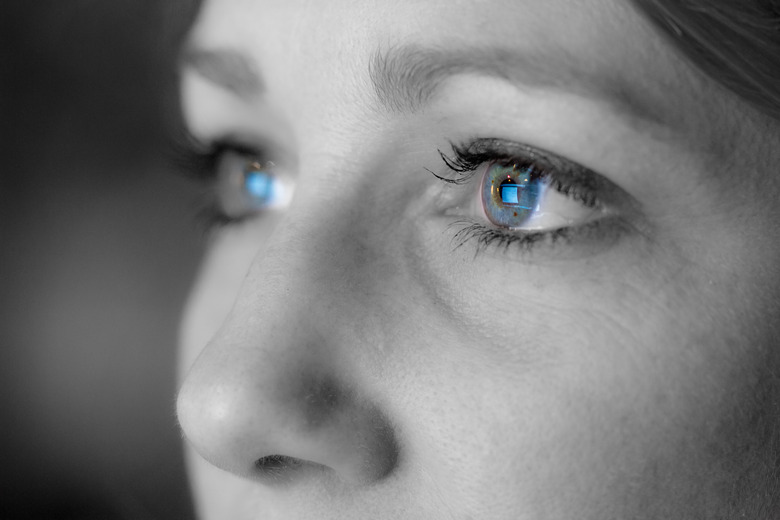What Is The Path Of Light Through The Eye?
The path of light through the eye begins with the objects viewed and how they produce, reflect or alter light in various ways. When your eyes receive light, it begins a second journey through the eye's optical parts that adjust and focus light to the nerves that carry images to your brain. Standing outdoors, for example, a night scene may be lit by streetlights, light from passing cars and the moon. Light allows you to see the sources themselves and the items they illuminate.
TL;DR (Too Long; Didn't Read)
Reflected light and the light from objects allows the image viewed through the eye to be seen and transmitted to the brain through the optic nerve. As some people age, macular degeneration, caused by retina deterioration, causes failing vision or loss.
Entering the Cornea
Entering the Cornea
The first thing light encounters when it enters the eye is the cornea, a protective clear covering over the pupil and iris. The cornea bends the light and begins to form an image.
Pupil: the Gatekeeper
Pupil: the Gatekeeper
Light passes from the cornea to the pupil, the dark circle in the center of the iris, which is the colored portion of the eye. The pupil regulates the amount of light that will enter the inner eye based on environmental conditions: It dilates, growing bigger to receive more light under dim lighting conditions, and shrinks in response to bright light. This response is quicker in young individuals and tends to slow with increasing age.
Through the Lens
Through the Lens
From the pupil, light waves travel to the lens of the eye. The lens is a clear, flexible structure that focuses an upside-down image onto the retina. It is flexible so that it can focus images that are close or far away. Eye injuries, normal variations in the eye and age can distort the lens, making it difficult to focus on nearby or faraway objects — you see the objects, but details are hazy. Late in life, the lens can also become clouded and form cataracts that make images seem hazy and dim.
Reception at the Retina
Reception at the Retina
The lens focuses light and images on the retina, a layer of light-sensitive cells at the back of the eye. It is made up of two kinds of photoreceptor cells: cones and rods. The cones transmit color and sharp images. The concentration of cones is low on the sides of the retina and increases as the cones approach the center of the retina, or the macula. The rods are more sensitive to light and are more numerous than cones; They let you see when lighting is dim, although what you see lacks color and clear details.
Optic Nerve and Brain
Optic Nerve and Brain
Once the retina senses the image, it sends impulses to the optic nerve at the back of the eye. The optic nerve then transmits them to special areas in the brain, which automatically flips the upside-down image so that it becomes upright again. Disease or injury can damage the optic nerve, resulting in varying degrees of blindness.
Cite This Article
MLA
Gingrich, Jane. "What Is The Path Of Light Through The Eye?" sciencing.com, https://www.sciencing.com/path-light-eye-6016626/. 29 April 2018.
APA
Gingrich, Jane. (2018, April 29). What Is The Path Of Light Through The Eye?. sciencing.com. Retrieved from https://www.sciencing.com/path-light-eye-6016626/
Chicago
Gingrich, Jane. What Is The Path Of Light Through The Eye? last modified March 24, 2022. https://www.sciencing.com/path-light-eye-6016626/
